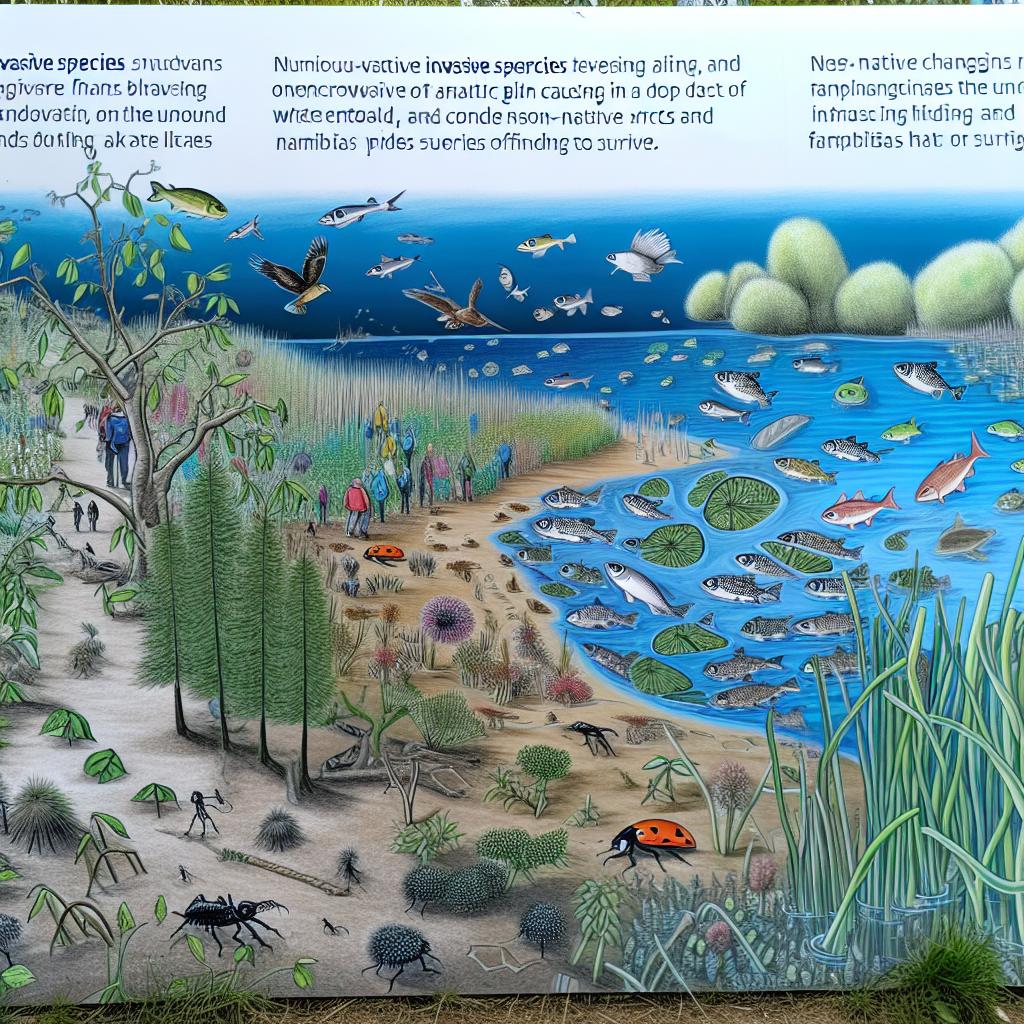Introduction to Invasive Species in UK Lakes
Invasive species refer to those organisms that establish themselves in environments where they are not originally found. The introduction of such species often leads to ecological transformations that can be quite significant. In the United Kingdom, the country’s lakes and various freshwater systems have proven to be particularly susceptible to the impacts of these alien species. As these invasive entities establish themselves, they can dramatically alter native ecosystems, leading to disruptions in biodiversity and changes that affect the entire natural environment.
Common Invasive Species in UK Lakes
Several invasive species within UK lakes have been identified as having particularly prominent effects on local ecosystems. Among these, the zebra mussel (Dreissena polymorpha) is notably recognized for its ability to proliferate swiftly. The presence of zebra mussels in a water body can lead to the clogging of water intake infrastructures, such as pipes, which can in turn have long-ranging impacts on local water resource management. They compete with indigenous mollusk populations for resources, further stressing native aquatic life. In parallel, the signal crayfish (Pacifastacus leniusculus) exemplifies another pressing challenge. Beyond simply competing with native crayfish, the signal crayfish introduces diseases to which native species are not immune, exacerbating their population decline.
The Impact of Invasive Species on Ecosystems
Invasive species, once introduced into lake ecosystems across the UK, can lead to several detrimental impacts. Foremost among these concerns is the threat posed to local species. Because these invasive creatures often do not face natural predators in their new environments, their numbers can increase rapidly. This unchecked growth often results in the displacement of native species, ultimately leading to reduced biodiversity. Moreover, invasives can drastically transform habitats by modifying water quality, influencing sedimentation processes, and changing the nutrient availability. These alterations further disturb the ecological balance and inhibit the natural functioning of these aquatic ecosystems.
Environmental and Economic Consequences
The widespread presence of invasive species presents a challenge that is as much economic as it is ecological. Significant financial resources are required to manage and control the spread of these species. For instance, facilities responsible for water treatment may incur higher operational costs on account of needing to repeatedly clear obstructions from water intake systems caused by zebra mussels. Beyond these structural and operational challenges, the presence of invasive species also adversely affects recreational activities, such as angling and leisure boating, which hold substantial economic value in numerous regions. The intrusion of these species not only alters the environment but can also dissuade tourism and recreational engagements, further affecting local economies.
Efforts to Control Invasive Species
Comprehensive strategies have been formulated to manage and mitigate the prevalence of invasive species within UK lakes. Prevention remains a decisive approach, with ongoing monitoring and regulation designed to curtail the introduction of new species into vulnerable water bodies. When prevention proves insufficient, eradication measures are implemented. These can involve multiple techniques, ranging from mechanical removals, systematic chemical treatments, to introducing biological controls that target specific invasive populations. The role of public awareness and education is paramount. Campaigns have been established to educate water users about best practices, emphasizing vigilance and the adoption of behaviors that prevent the spread of these invasive organisms.
For further insights on preventative techniques and ongoing initiatives aimed at managing invasive species, visit the UK Government’s Invasive Non-Native Species Policy.
Conclusion
Invasive species represent an important challenge to the ecological integrity and biodiversity of UK lakes. Through a continued commitment to awareness, management, and prevention strategies, efforts are geared toward alleviating the impacts of these non-native species on the country’s freshwater environments. While the complete removal of invasive species may not always be a reachable goal, consistent, coordinated actions are pivotal in controlling their dissemination and in reducing their environmental footprint. The ongoing commitment to monitoring and responding to the presence of invasive species remains vital for sustaining the UK’s vibrant aquatic ecosystems.
